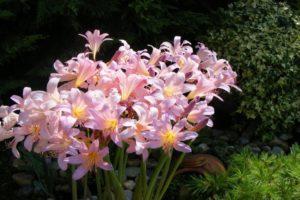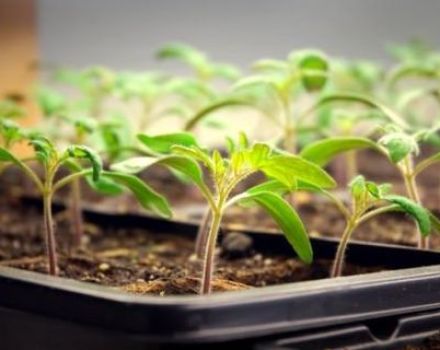How to propagate a lily with scales, babies, cuttings after flowering and seeds
Lily is called the queen of the garden for its strict beauty, the unusual external shape of flowers, the variety of shades of petals. The plant is appreciated for its unpretentious care. And there are so many ways to reproduce lilies that you can easily get your favorite plant specimen and breed it on your site.
How to breed your favorite lily specimen
You can buy lily bulbs in specialized stores or from flower growers in the market. But the resulting flower will not always be of the type and variety that you wanted. Therefore, it is better to learn how to plant garden lilies on your own in simple ways. Most often, they reproduce vegetatively. It is the most simple, accessible to everyone. It is more difficult to plant seeds, but it is possible to preserve the species qualities of the plant.
By dividing the bush
Lilies are characterized by rapid growth. Every year the bush becomes more luxuriant, and the plant needs a lot of space. Therefore, when transplanting a daylily, you can separate part of the bush and plant it on a new site.
It is better to carry out the procedure when the last petals fall. In August or September, a lily bush is dug with a pitchfork. The division of the root part is carried out carefully so as not to damage it.
But not always the method can be applied. So, in oriental hybrids, less additional bulbs are formed. This breeding method does not suit them.

Children
In bulb lilies, after the growing season, small children are formed on the roots. They are excellent planting material. But you need to know that you can get flowering plants from them in 2 years.
Children are separated from the mother bush and seated at a depth of 3 centimeters on a separate bed. The place is cleared of weeds, loosened, fertilized. For the winter, be sure to cover with a layer of fallen leaves or peat.
When buds form on young stems, they must be cut off so that the lilies can gain strength for the next growing season next year.
Such types of decorative culture as Canadian, leopard, tiger are rich in children.

Bulb
In the axils of the leaves of some types of garden flowers, airy bulbs, or bulbs, appear. They are formed after flowering lilies of snow-white, Asian hybrids. If you plant them, you can get new copies of flowers. They take root quickly, you just have to cover them with earth. Bulb sizes vary from 3 to 8 millimeters.Their formation can be triggered by transplanting plants to another place at the moment buds appear on the stems.
Air bulbs are able to sprout independently, falling to the ground. This is the best planting material from which the desired plant varieties are obtained. Flowering after propagation by air bulbs occurs in the 3rd year.
Stem cuttings
The most convenient way to propagate perennial flowers is by cuttings. Prepare the material in advance. After flowering, the cuttings are separated from the shoots, treated with Kornevin and placed in a container with nutrient soil. If the weather permits, then it is better to immediately plant the escape in the garden. To speed up the rooting of the stem, then cover it on top with a plastic bottle. In a mini greenhouse, after 2 weeks, the stalk will sprout.
With this method of reproduction, lilies will bloom next year.
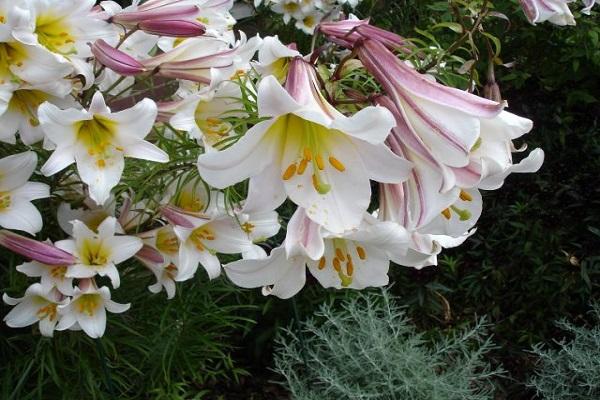
From a flower shoot
A lily presented for a solemn event can become the material from which an ornamental plant will appear. The shoot should be 15-20 centimeters long. The peduncle and part of the leaves are preserved on it. They put the shoot horizontally in the dug groove and sprinkle it with a layer of soil. The soil is selected light, loose. From above it is worth irrigating the soil with Epin solution. The plantings are covered with a film and left. Within 2 months, the shoots are ventilated, watered. For the winter, you need to cover the cuttings with a layer of last year's foliage, humus.
Growing from a shoot is successful if the breeding rules are followed. As soon as bulbs appear on the stems, they are planted in a permanent place in the garden.
Leaves
Some types of lilies: long-flowered, sulfur-colored - can be propagated by leaves. Take propagation material from the top of the stem. Tear off the leaves along with the whitish base. A loose nutrient soil is poured into a container with drainage holes in a layer of 5-6 centimeters. The leaves are placed in the ground obliquely, covered with soil up to half. It is better to cover it with coarse sand from above. A plastic bag or bag is put on top.
While the leaves are rooting, you need to air the container daily, monitor the condition of the soil so that it does not dry out. As soon as the bulbs begin to form at the base of the leaves, remove the shelter. For the winter, place the container in the basement. In the spring, plants are planted in a permanent place.

Scales
This breeding method is used all year round. After all, they carry out the procedure at home, preserving the mother plant for flowering and getting a sufficient number of planting scales. They form on the outside of the lily bulb. A third of the scales are carefully removed. They are separated from 7 to 10 pieces from one onion. Reproduction is carried out more often in the fall.
A loose substance is poured into the prepared plastic container. It is better to fill with sphagnum moss or coconut substrate. Many people prefer peat, vermiculite.
Placing the white scales of lilies in the soil mixture, cover the containers with foil. They keep the planting material in a warm room with an air temperature of 23-25 degrees. A month later, small onions will appear, they are allowed to develop for another 30-40 days and are transplanted into the garden. Can be placed for germination of scales in bags with a substrate. They are tied up and laid out in a warm place.
If breeding is carried out in the spring, then you can arrange a greenhouse for the scales in the open air. Lilies will not bloom right away.
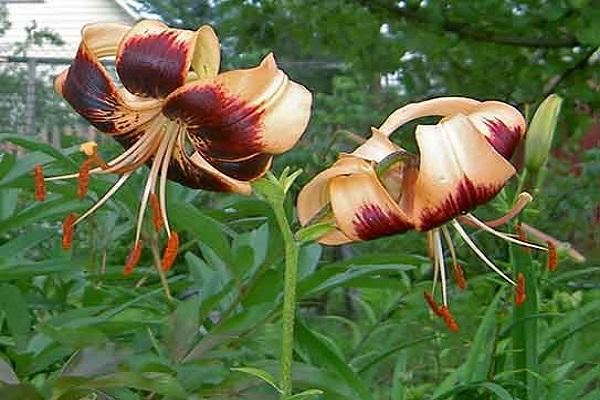
Seeds at home
Seed propagation is acceptable for varietal lilies. Hybrids are not bred in this way. Full-value seeds are obtained from species plants - Tibetan, Daurian, penetrating, one-color lily.
In open ground
Seeds are planted in the spring, preparing a bed for lilies. The soil should be nutritious and loose. Lilies grow best in open areas, not shaded by large trees.Flower seeds are laid in the grooves with a distance of 5 to 15 centimeters. Sprinkle on top with a moist substrate. In a month, sprouts will appear, requiring watering, loosening the soil. The lily develops from seeds for a long time, and will bloom only in the 4-5th year.

In seedling boxes
At home, sowing of ornamental culture begins from the end of February. Lily seeds are placed in boxes filled with nutritious soil. From above it is better to cover the landings with plastic wrap. Place containers in a warm place. The first shoots will appear in 30-35 days. Then the film is removed and the containers are placed on the windowsills, well lit, but not in direct sunlight. The seedlings are looked after, watering, feeding, diving in a timely manner. In May, the bulbs with sprouts are transferred to a permanent place.
In jars with a nutrient substrate
Lilies are sown in jars filled with a nutritious substance: moss, peat, vermiculite - the same as in boxes in February-March. Putting the container in a warm place, they are waiting for the sprouts to appear. Then containers with seedlings need a temperature of 15 degrees Celsius. The appearance of 2 real leaves suggests that the flower can be transplanted into separate containers.
Plants are transferred to a permanent place after hardening in April-May.
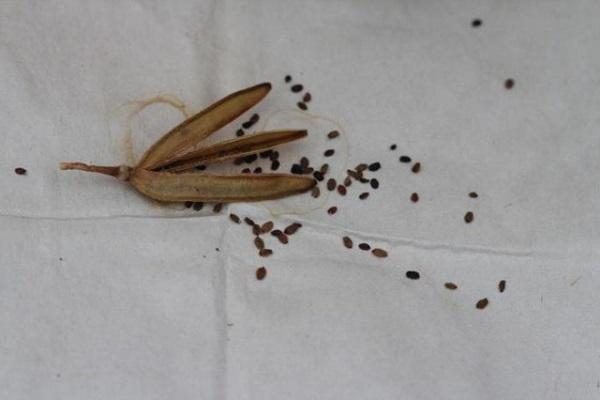
Preparing the bottom of the bulb
A rarely used method of propagating an ornamental plant is carried out as follows:
- In the spring, a large onion is dug out.
- Cut off the bottom with a sharp knife.
- Place it upside down in a hole with nutrient soil.
- Sprinkle with a layer of earth 5-6 centimeters.
- Moisten the well.
Keep the bed moist during the summer. For the winter, lay a layer of mulch on top. In the spring, they dig up the bulbs formed from the cut bottom. They are transplanted to a permanent place. Any lilies can be grown in this way.
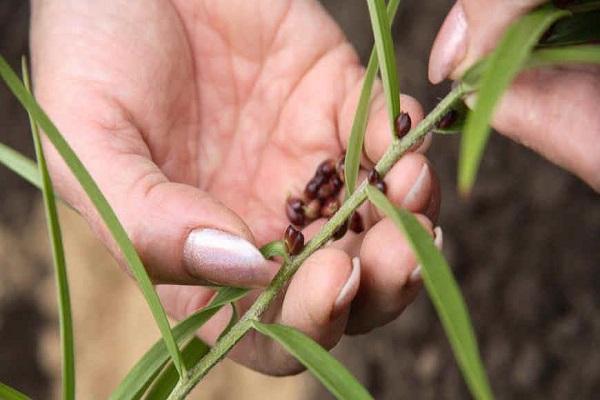
Care
A young plant needs competent care, otherwise you can not wait for the culture to bloom. The plant requires light, moisture and soil nutrition.
Lighting
Decorative culture needs light in moderation. She does not tolerate shade well, but she does not need direct rays of the sun for growth. Partial shade is also suitable for Asian and tubular varieties of lilies.
Support
The tall stems of some plant species require a garter. Therefore, a peg is driven in next to it, to which the lily stems are tied. You can prepare a trellis when lilies are planted in a row. A stand is needed so as not to damage the flower stems. Although they are thick and durable, they can break under the influence of the wind.

Watering
Since spring, transplanted plants need irrigation. Young seedlings are sprayed, and adult plants are watered at the root. Watering requires moderation. Humidification frequency depends on weather and climatic conditions.
Mulching
If it is impossible to water the lilies often, you can lay mulch on the beds to retain moisture. As it is taken peat, humus, straw treated with fungicides. In the fall, they dig up mulch, embedding it in the soil. You can apply a layer at the end of winter to keep moisture in the ground high.
Top dressing
Fertilizers with minerals are applied in the spring before the sprouts of the garden flower appear. The plant needs additional feeding during the formation of buds, after flowering. First, he needs more nitrogenous fertilizers, then - with phosphorus and potassium. It is useful to water the lilies with a solution of wood ash.
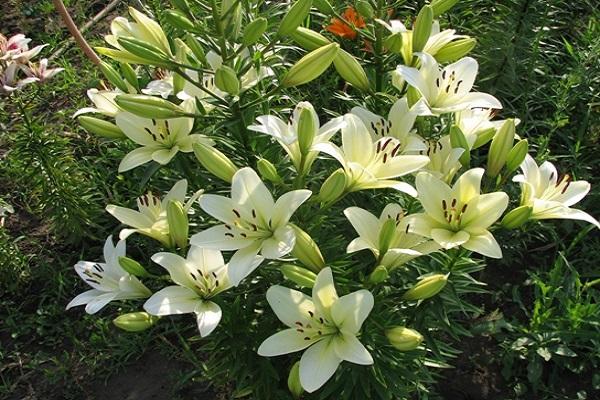
Shelter
For the winter, young seedlings of lilies are covered with a layer of fallen leaves, straw. Adult flowers need shelter where winters are most severe. Useful for this purpose spruce branches of coniferous trees or several layers of non-woven material.
Probable problems and solutions
Unpretentious plants, like lilies, also have developmental problems. They are associated with improper planting or plant care:
- The yellowing of the leaves is caused by a lack of moisture in the ground.
- The stem begins to turn brown, dry out during hot summer.
- Spots on the leaves appear from infection of the bulbs with pathogenic fungi.
- Lilies do not bloom due to decay of roots or drying of bulbs.
In order for the decorative culture to please with flowering, longevity, it is necessary to moderately water the plantings, feed them in time. Before planting, the seed is treated with a solution of potassium permanganate, fungicides.
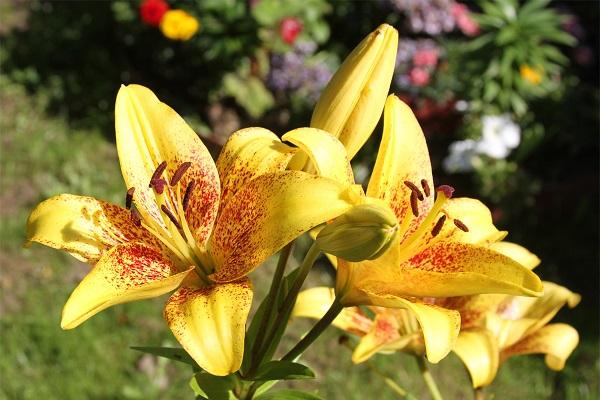
A few tips from experienced florists
For the result of reproduction of the daylily to be successful, you must:
- choose high-quality bulbs without damage, rot;
- try not to overdry the planting material;
- store bulbs in a cool place until planting;
- Place the sprouted bulbs in pots with nutritious soil.
Even novice florists can grow lilies. You just need to follow the advice on agrotechnics of decorative culture.
